Art Fairs
Best Buys: Eight Artists at Independent to Collect for Under $15,000 (If You’re Lucky and Move Fast)
There are some really excellent works on offer in the fair this year, but they won't be available for long.
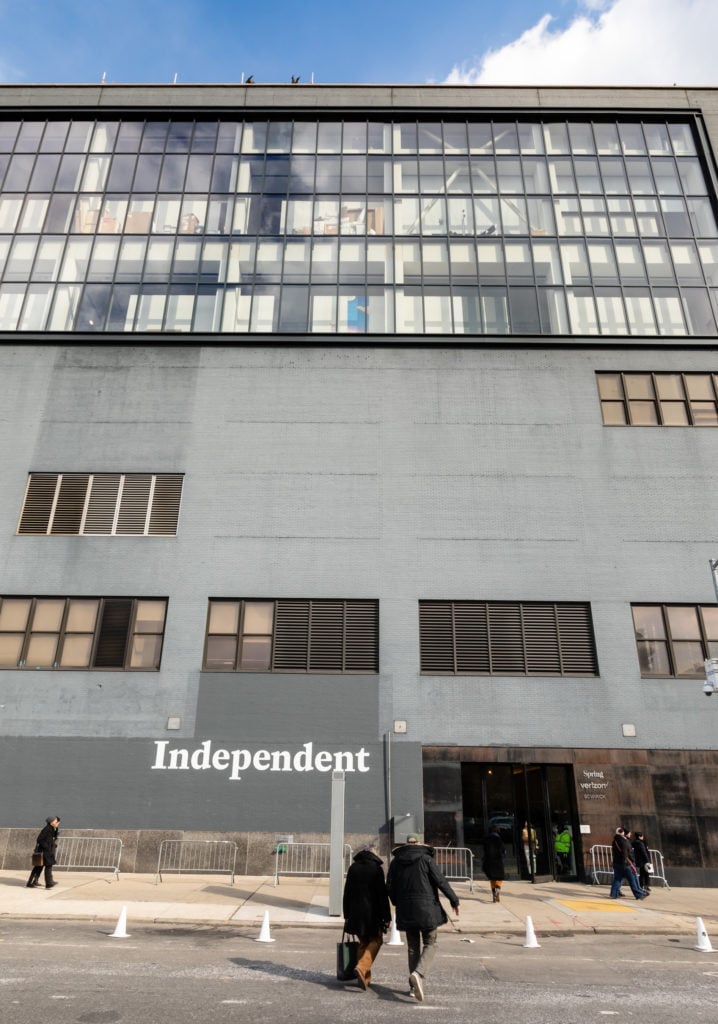
There are some really excellent works on offer in the fair this year, but they won't be available for long.

Taylor Dafoe &
Tim Schneider

A shivering crowd half the length of a city block lined up outside the entrance to Independent New York Thursday morning, all braving the biting cold for their turn inside the VIP opening of the fair’s 11th edition. Their eagerness makes sense. Unlike its bigger and brasher brethren on the New York fair circuit, Independent has earned a reputation for measured, thoughtful work curated into an environment designed to avoid the suffocating cubicles-and-aisles format we all love to hate. For collectors, it’s a great place to acquire art by up-and-comers, left-field gems, and critical darlings whose markets haven’t yet caught up to the quality of their work—often for a surprisingly attractive price. With that in mind, here are our choices for the “best buys” of the fair, all coming in under $15,000.
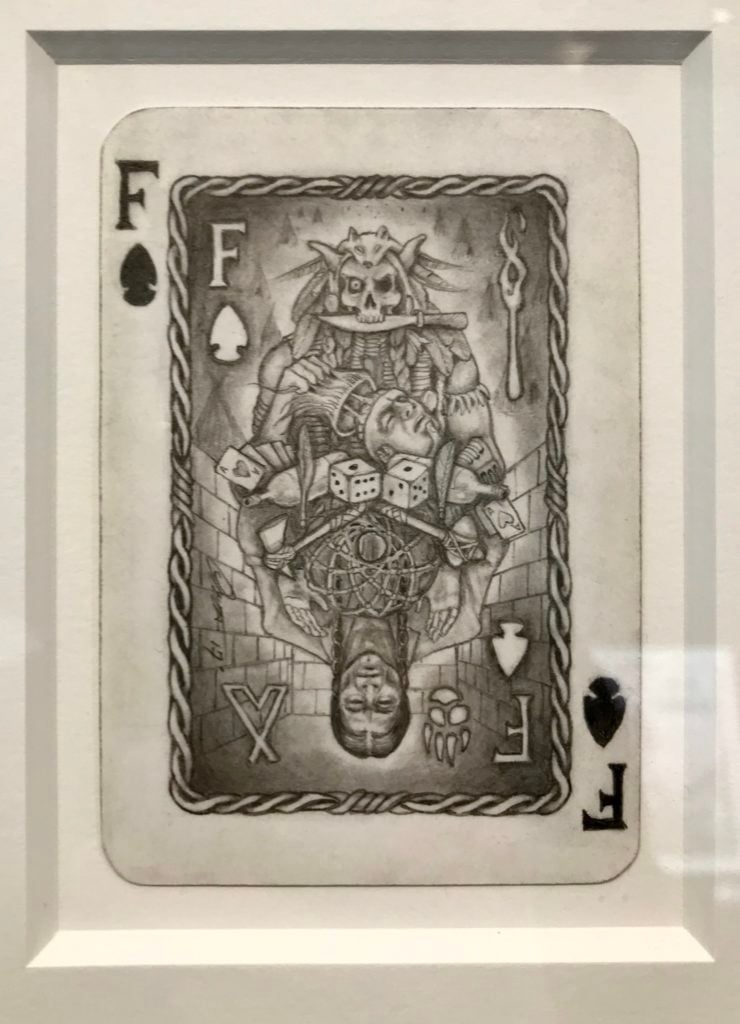
Gil Batle, F of Spades, 2017. Photo by Tim Schneider.
Booth: Ricco/Maresca
What They Cost: $2,500 per work
Why It’s a Deal: Gil Batle is the straight-no-chaser antidote to an art world chained too tightly to an ecosystem of privilege. A self-taught Filipino-American artist who spent 20 years tumbling through the California penal system on fraud and forgery convictions, Batle honed his draughtsman skills to serve as both a currency and a protective talisman in the brutal prison-block economy.
While he’s best known for his ornate narrative carvings on ostrich eggshells—the first exhibition of which sold out “instantly,” according to gallerist Frank Maresca—Batle’s series of Playing Card drawings incorporates nearly as much technical virtuosity and storytelling power in a vastly more manageable format. Batle created the works in his post-prison life on a small Filipino fishing island, but they nevertheless call back to the playing cards he made during his years in lockup, where, Maresca says, the cards and the sequence in which they were exchanged “communicated a secret language between inmates.” So if you want a bracing relief from the secret language of the art world, now you know where to turn.
—Tim Schneider
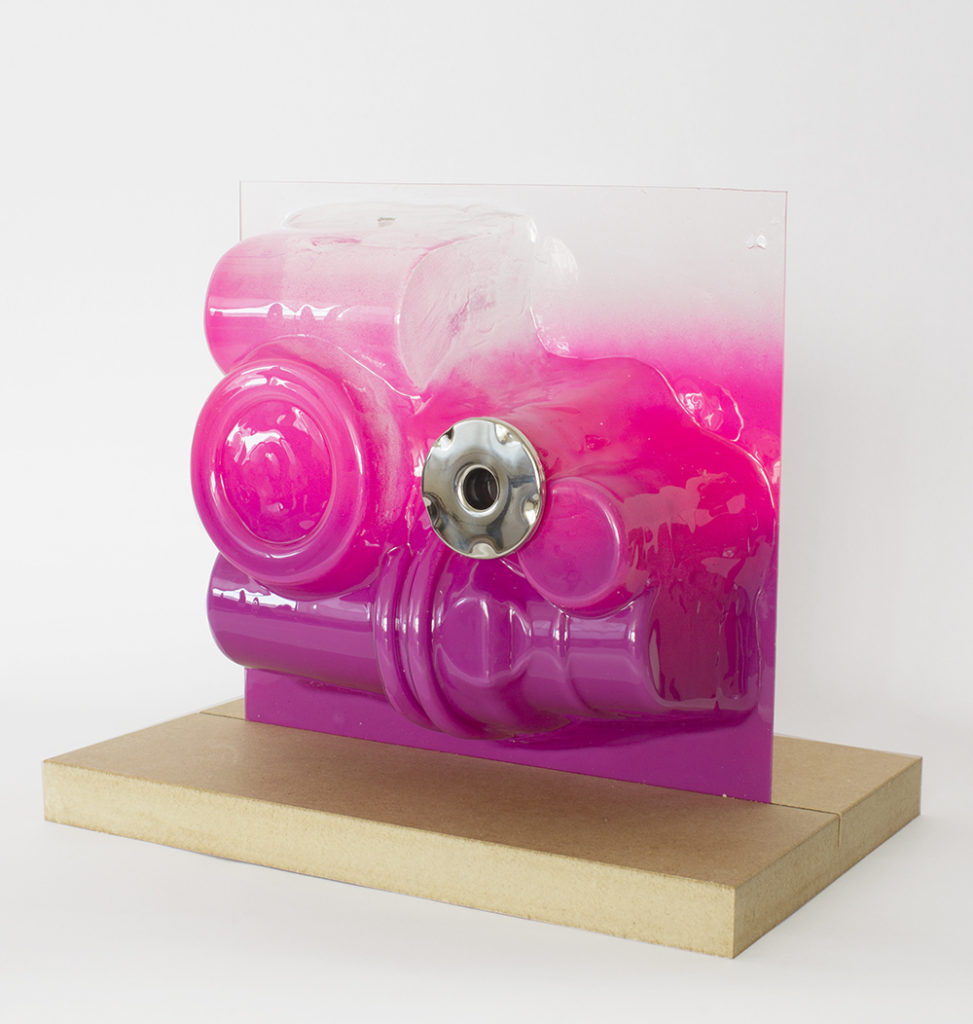
Mika Tajima, Death in the Afternoon (Magenta/Pink), 2015. Photography by SculptureCenter. Image courtesy of the artist.
Booth: SculptureCenter
What They Cost: $2,500 per edition of 30
Why It’s a Deal: Mika Tajima has been quietly but steadily building a rock-solid CV since her first significant exhibition in 2000. Notable milestones include a 2016 commission from SculptureCenter (hence the relationship here), a 2017 solo exhibition at the Wadsworth Atheneum, and through April 2019, her inclusion in Programmed, the Whitney’s genre- and era-spanning group exhibition on rules-based artworks.
Now represented internationally by Osaka’s Taro Nasu and domestically by Los Angeles’s Kayne Griffin Corcoran (where she will hold a solo exhibition later this year), Tajima also manages in her work to perform the rare feat of forging instant graphic appeal out of underlying substance. For instance, Death in the Afternoon succeeds purely as a gorgeous sculptural multiple cast from hot-tub parts and airbrushed by hand in candy-color gradients that recall California minimalist Craig Kauffman, but it’s even more effective once understood as another branch in Tajima’s continuing exploration of the many ways in which modern technology, especially machinery, impacts the human body.
—Tim Schneider
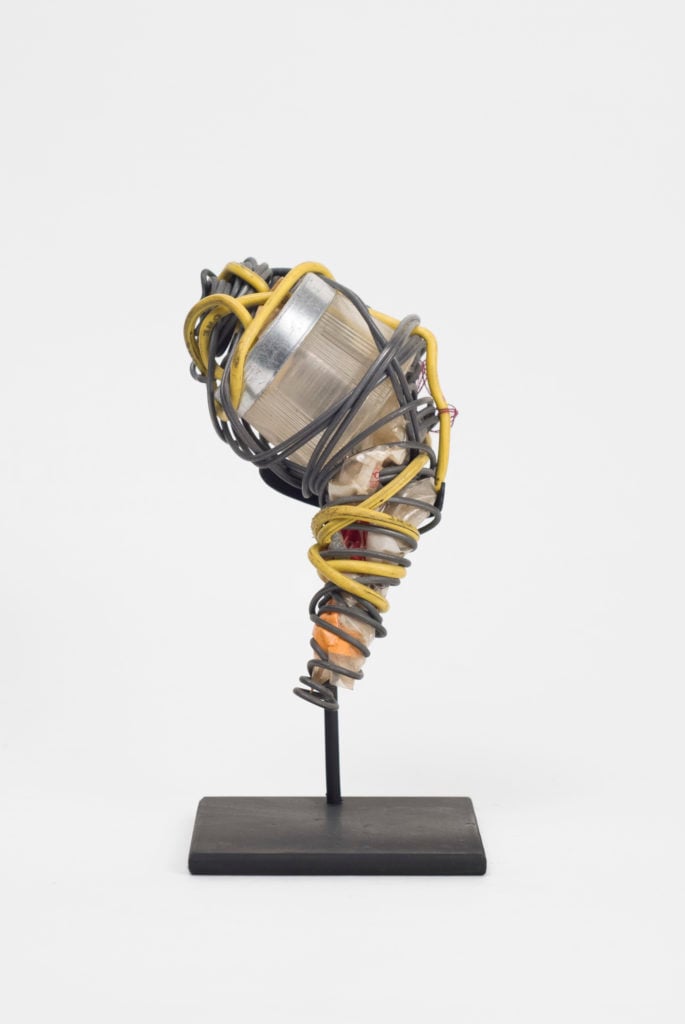
Philadelphia Wireman, Untitled (Glass Knob, Yellow Wire), c. 1970-1975. Image courtesy of Fleisher/Ollman, Philadelphia.
Booth: Fleisher/Ollman
What They Cost: $2,000 to $5,000 each
Why They’re a Deal: The legend of Philadelphia Wireman is reason enough to collect the artist’s work on its own. In a Velvet Buzzsaw-esque twist of fate, roughly 1,200 totemic sculptures were discovered, presumably abandoned, on trash pickup night in a south Philadelphia alley in the late 1970s. Sustained attempts to identify the maker have proved fruitless; their name, age, ethnicity, and even gender remain unconfirmed. The Philadelphia Wireman moniker comes from the fact that nearly every work uses tightly coiled, heavy-gauge wire to encase a collection of found objects reminiscent of both Jack Whitten’s sculptures and the African “power objects” Whitten himself looked to for inspiration.
The unknown artist has since garnered real institutional support. The Smithsonian American Art Museum owns 19 works by Philadelphia Wireman, and they have also been the subject of solo exhibitions at Florida’s Cornell Fine Arts Museum and Sweden’s Oernskoldsviks Museum, as well as being exhibited in group shows at the ICA Philadelphia, the Contemporary Arts Center in Cincinnati, and the Musee d’Art Brut in Lausanne, among others. Hurry, though: Fleisher/Ollman had already placed seven of the sculptures from their booth a few hours into Thursday’s VIP preview.
—Tim Schneider
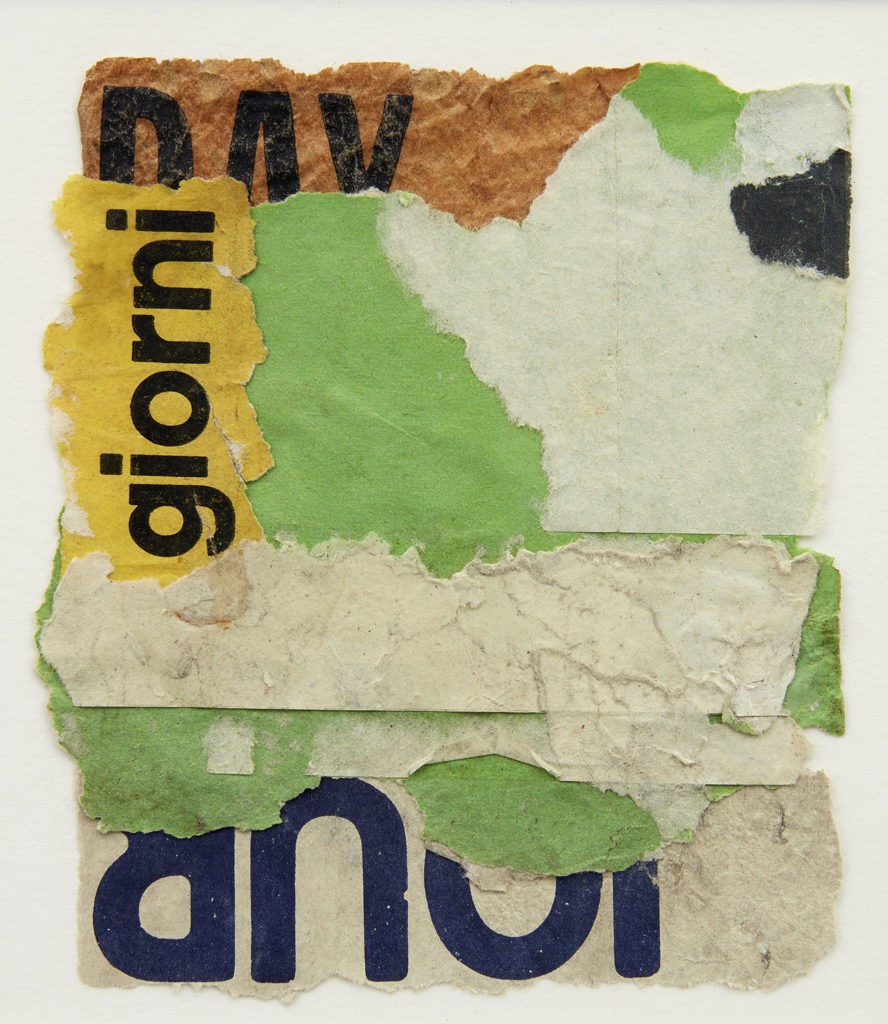
Irwin Kremen, Gather Your Days, 1973. Image courtesy of Klaus von Nichtssagend.
Booth: Klaus von Nichtssagend
What They Cost: $9,000 to $14,000 each
Why They’re a Deal: While it’s rare to find an artist whose museum stature overshadows his gallery stature, Irwin Kremen proves the exception to the rule. Now 93 years young, Kremen studied writing at Black Mountain College in the 1940s, yet befriended several visual artists, including John Cage and Merce Cunningham, during his formative period. His artist friends encouraged him over the decades to maintain his late-blooming collage practice, in which Kremen, at age 41, began using Japanese tape to hinge individual scraps of paper and other materials (mostly collected during his travels) into meticulously planned, quasi-painterly abstractions that border on bas-relief sculpture.
Even though Kremen long ago took up clinical psychology as his profession—he eventually became the department chair for the subject at Duke University—most artists would murder for his institutional CV. Kremen’s career includes solo exhibitions at the Smithsonian, the Brooklyn Museum (later traveling to the Albright-Knox Art Gallery and Rose Museum), and the Berkeley Art Museum and Pacific Film Archive, among others. His works also reside in the permanent collections of prestigious American museums such as the Art Institute of Chicago, the Carnegie Museum, and the MFA Houston. Still, he has had only a handful of gallery shows, making his collages here a rare opportunity for collectors, who had acquired at least two of the works by early afternoon.
—Tim Schneider
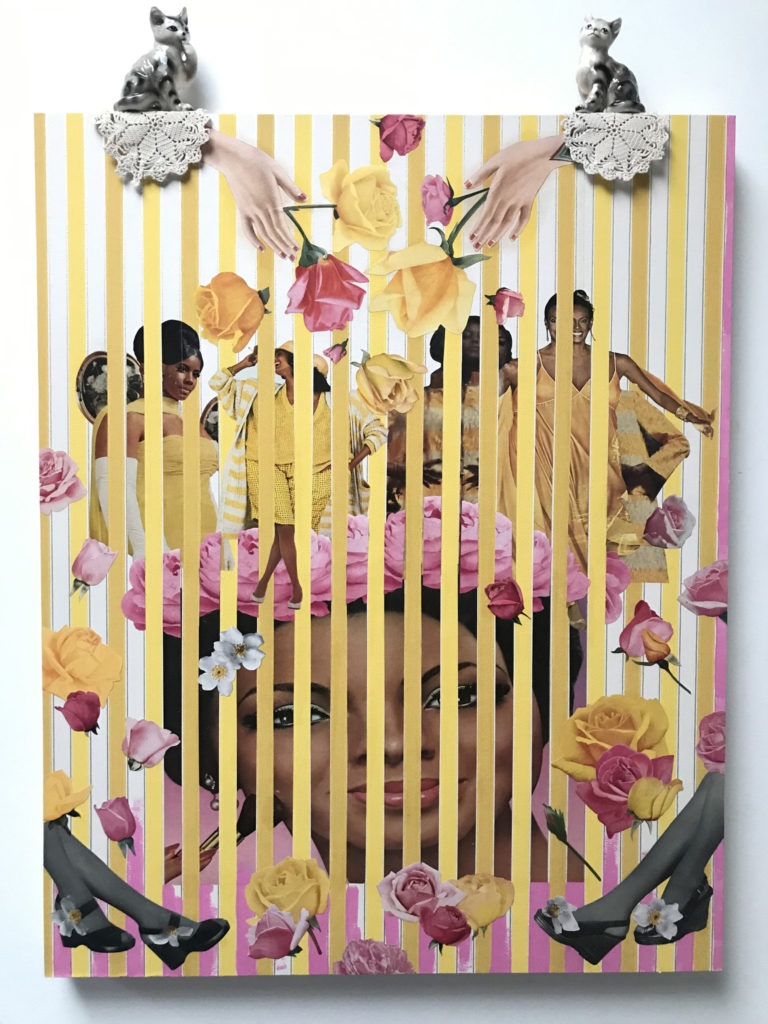
Genevieve Gaignard, Between The Lines (2019). Courtesy of the artist and Monique Meloche Gallery, Chicago.
Booth: Monique Meloche Gallery
What It Costs: $7,000 to $10,000 each
Why It’s a Deal: Genevieve Gaignard is perhaps best known for her performative photographs in which she assumes different personas across the spectrums of race and class. But her mixed-media work, like this one on display at Monique Meloche’s booth, is just as impressive. And it deals with similar themes: the commodification of ethnicity, representation in media, and that distinctly American brand of campiness. In April, Gaignard will open a solo show at Meloche—her first with the gallery—devoted to this new body of work. If you’re hoping to purchases one of these pieces, that upcoming show might be your best bet—the artist’s work on view in the fair sold within hours of the VIP opening.
—Taylor Dafoe
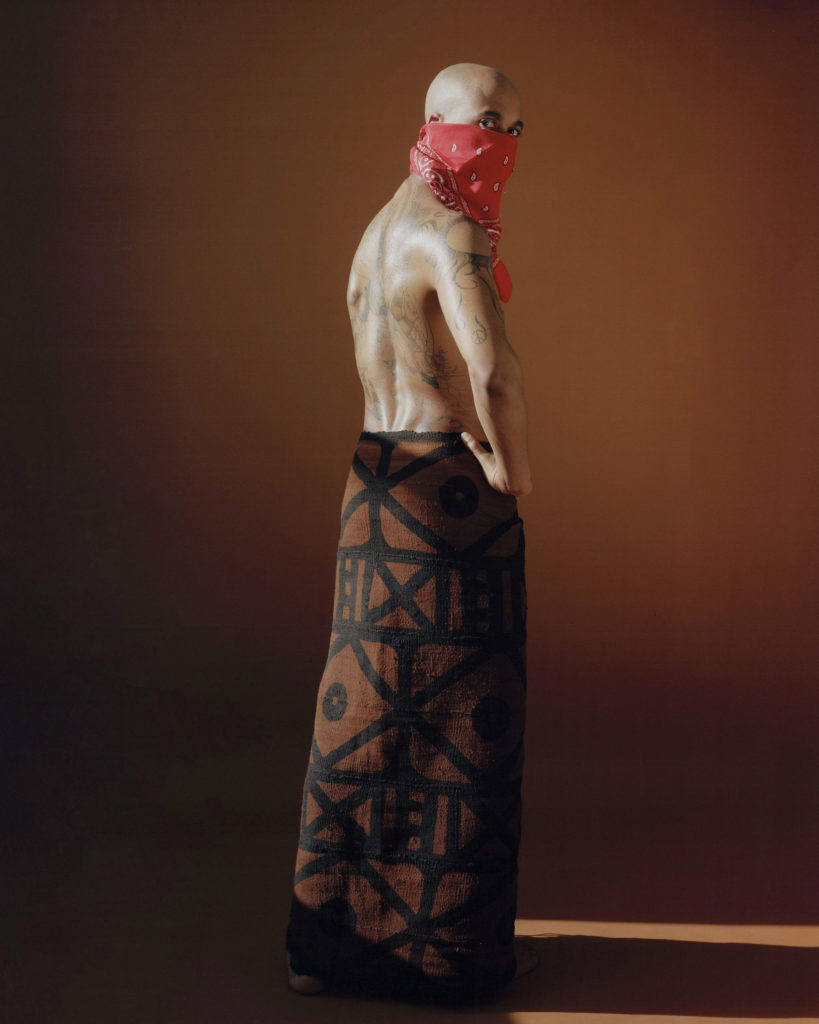
John Edmonds, Hari (2019). Courtesy of the artist and COMPANY, New York.
Booth: COMPANY
What It Costs: $7,000
Why It’s a Deal: Edmonds has three prints on view at COMPANY’s booth, all of them sensual photos of shirtless black men, distinguished by the warmth of their town and treatment alike. It’s an opportune time to purchase the 29-year-old photographer’s work: last month he was announced as one of the participating artists of this spring’s Whitney Biennial.
—Taylor Dafoe
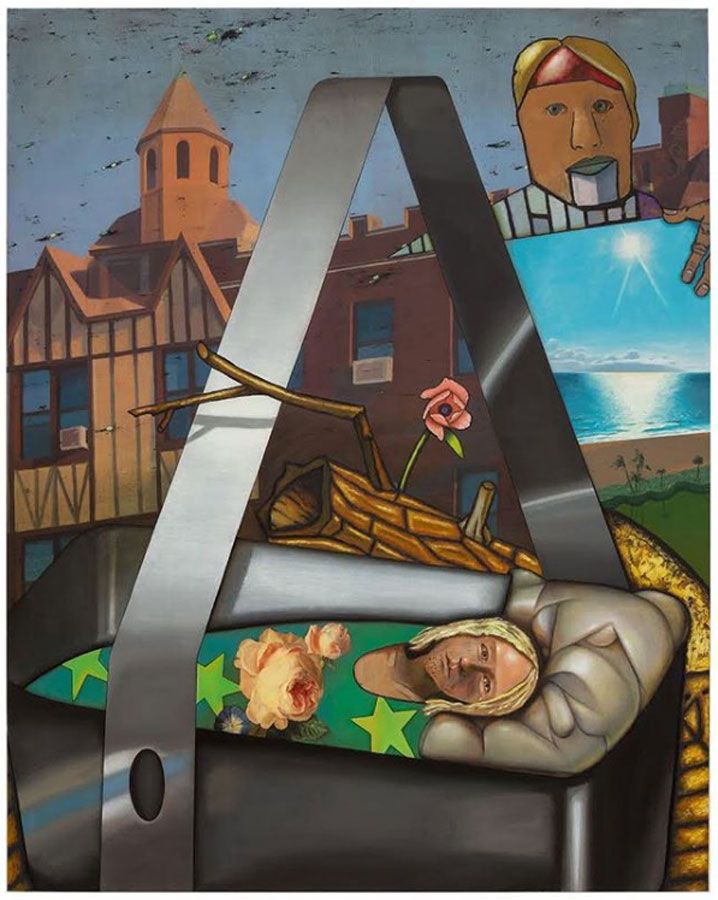
Anna Glantz, Changeling (2019). Courtesy of the artist and the Approach.
Booth: The Approach
What It Costs: $15,000
Why It’s a Deal: With their everything-but-the-kitchen-sink variety of surrealism and tricky treatment of perspective and volume, it would be extremely difficult to put any one of the paintings in Anna Glantz’s solo booth for the Approach into words—concisely, at least. That’s to the work’s credit. The 29-year-old artist’s large-scale canvases feel both fresh and in conversation with painting past. However, you’ll have to look elsewhere if you’re hoping to acquire her work now—all six of the paintings on view at the fair have already been sold.
—Taylor Dafoe
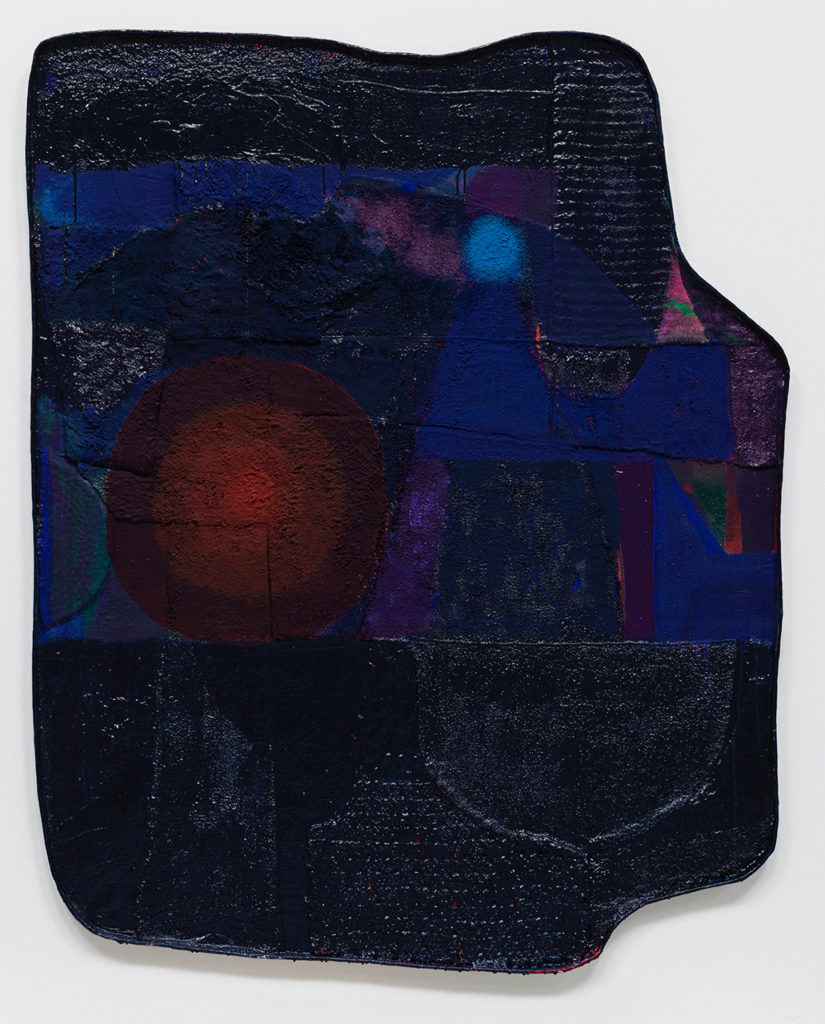
James Benjamin Franklin, Hunting Silence (2019). Courtesy of the artist and Reyes I Finn.
Booth: Reyes I Finn
What It Costs: $10,000
Why It’s a Deal: It’s hard to tell the materiality behind the abstract wall-hanging works of James Benjamin Franklin, on view in the Reyes I Finn booth. From a distance they look brittle, like misshapen ceramic plates; up close they’re softer, like rec-room carpeting covered in paint splatter. Either way, the Detroit-based artist’s work is compelling—and relatively affordable, ranging in price from $3,500 to $10,000.
—Taylor Dafoe